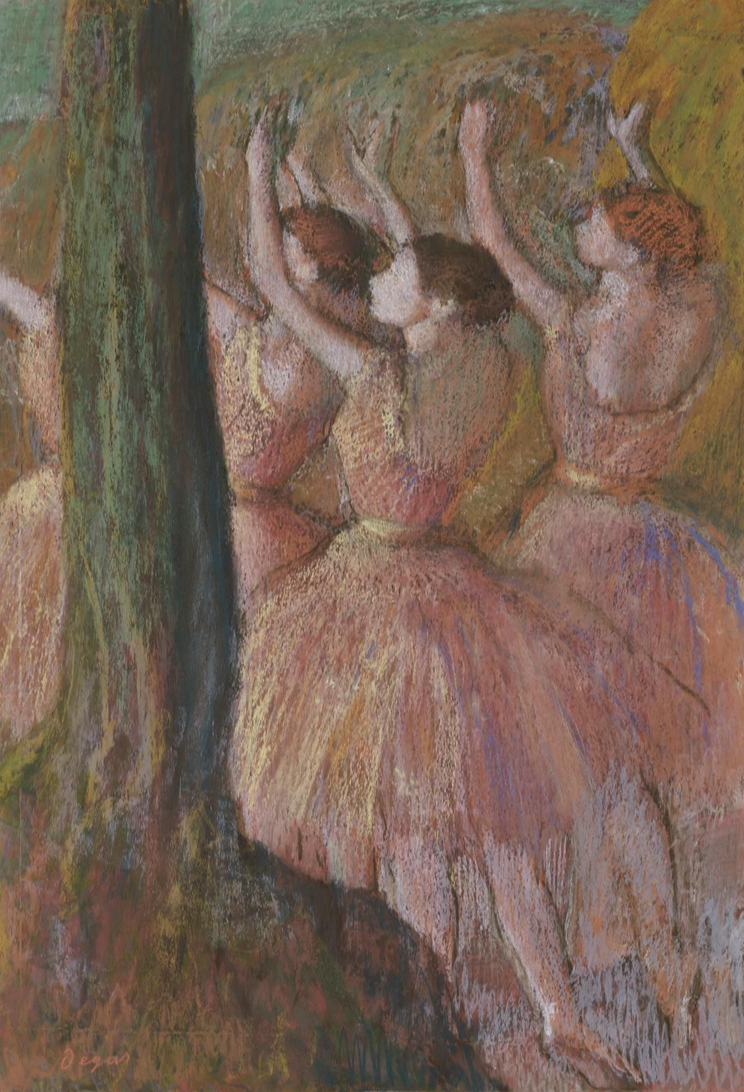‘French Pastels: Treasures From the Vault’ Review: Delicate and Delightful, The Wall Street Journal
- MJ Andersen
- Jul 14, 2018
- 4 min read
Updated: Nov 19, 2018
July 14, 2018
Boston’s Museum of Fine Arts presents works by Degas, Millet and others, rarely shown due to the fragility of their powdered surfaces.

Boston
As a young artist with as yet little to show for himself, Claude Monet decided to try working outdoors. Before long, his attempts to capture the French landscape using pastels, a material that had fallen into disuse, would help launch the Impressionist revolution. Monet contributed a group of the colored crayon drawings to the movement’s first important exhibit, in 1874. Yet for all he did to revive the medium, he would remain a princeling of pastels. Shortly, Edgar Degas would become their undisputed king.
Works by both artists are on rare public view at Boston’s Museum of Fine Arts. “French Pastels: Treasures From the Vault” is a quietly seductive exhibit that feels intended less to instruct than to delight, and does. Because pastels can shed powdered color so easily, they are seldom shown, and then only briefly—typically for just a few months per decade, according to the show’s curators. Affixed to easily discolored paper, they must be displayed in low light.
The MFA show’s roughly 40 works are spread across two spacious galleries and project a warm serenity against the Pilgrim-gray wall color. Most are from the museum’s rich holdings in 19th-century French art. Although more than half a dozen artists are represented, the show is
largely a duet. Degas trades melody lines with Jean-François Millet, an artist who was a generation older but whom Degas greatly admired.

The two are positioned in opposite rooms, with Degas confirming his mastery of a medium he loved, and Millet emerging as unfairly discounted. Contemporary viewers who dismiss Millet as sentimental will feel vindicated by some of the images on display. (Millet could not get enough of fair farm girls, winsome sheep, or noble sons of the soil.) But what you see can depend on where, historically, you stand.
One viewer who did not dismiss Millet was Vincent van Gogh. In 1875, he visited a large auction show of the artist’s late pastels. Van Gogh, who had not yet fully embraced his own artistic vocation, was smitten. When he entered the room, he later wrote his brother Theo, “I felt something akin to: Put off thy shoes from off thy feet, for the place whereon thou standest is holy ground.”
Van Gogh was not alone in his reaction. Millet’s pursuit of humble subject matter and his skill as a draftsman would influence artists for decades. Pastels facilitated his innovations with perspective. Requiring no drying time, they were easy to rework, encouraging spontaneous expression. They also made him a virtuoso of green. “Path Through the Wheat” (c. 1867) abounds in sunlit grassy hues. Forest tones anchor two companion pieces, “Primroses” and “Dandelions” (both 1867-68), which Millet seems to have composed while lying on his stomach in the shade.
His experimentation with the medium began in the 1860s, around the same time pastels were embraced by the much younger Monet. Helping to drive resurgent interest was the development of synthetic dyes, which expanded the array of available colors.
To the dismay of Degas, who detested amateurs, droves of pastel-toting novices set out to capture the French countryside alongside serious artists. A popular how-to book, “Le pastel simplifé et perfectionné” (“Pastel, simplified and perfected”), by Frederic Goupil-Fesquet, appeared in 1881 and sold briskly into the 20th century.
Museum-goers will find a copy positioned near a box of brightly colored crayons once owned by Mary Cassatt. “Study for the Banjo” (c. 1894), one of two Cassatt works in the show, employs vivid strokes of orange and teal, challenging the customary association of pastels with nursery-room hues.
Four works by Degas show him trying out different approaches to landscape. “Cliffs on the Edge of the Sea,” part of a breakthrough series completed in Normandy in 1869, echoes Millet’s quest for simple composition. More sky than land, its stark horizon is broken, barely, by a single rickety structure.

But the astonishing range of Degas’s technical experimentation comes through most clearly in a sampling of his trademark ballerinas. In “Dancers Resting” (1881-85), he renders a dazzling white skirt with naturalistic precision. “Dancers in Rose,” completed around 1900, exhibits a much freer hand. Here the ballerinas’ skirts are conjured with orange and blue streaks, in a drawing that almost appears to have been left out in the rain.

Other standout works are by Edouard Manet, Odilon Redon, and Norwegian artist Johan Frederick (Frits) Thaulow, whose refreshing snow-scapes take full advantage of their powdery medium. A portrait completed by Camille Pissarro around 1874 suggests that nothing can capture a fleeting moment so well as pastels. The mustached sitter for “Portrait of Père Papeille, Pontoise” is currently unknown to art historians. Yet viewers may feel they know him well. With his amused smile, Papeille could easily be saying, “So, tell me about yourself”—without the least interest in the answer, nor in your assumption, now slightly shaken, that when it comes to pastels, Degas unreservedly reigns.
—Ms. Andersen is the author of the memoir “Portable Prairie: Confessions of an Unsettled Midwesterner” (Thomas Dunne/St. Martin’s) and writes frequently on the arts.





Comments